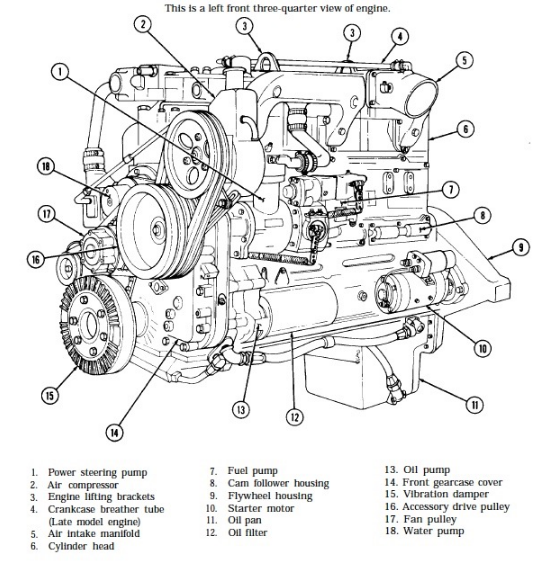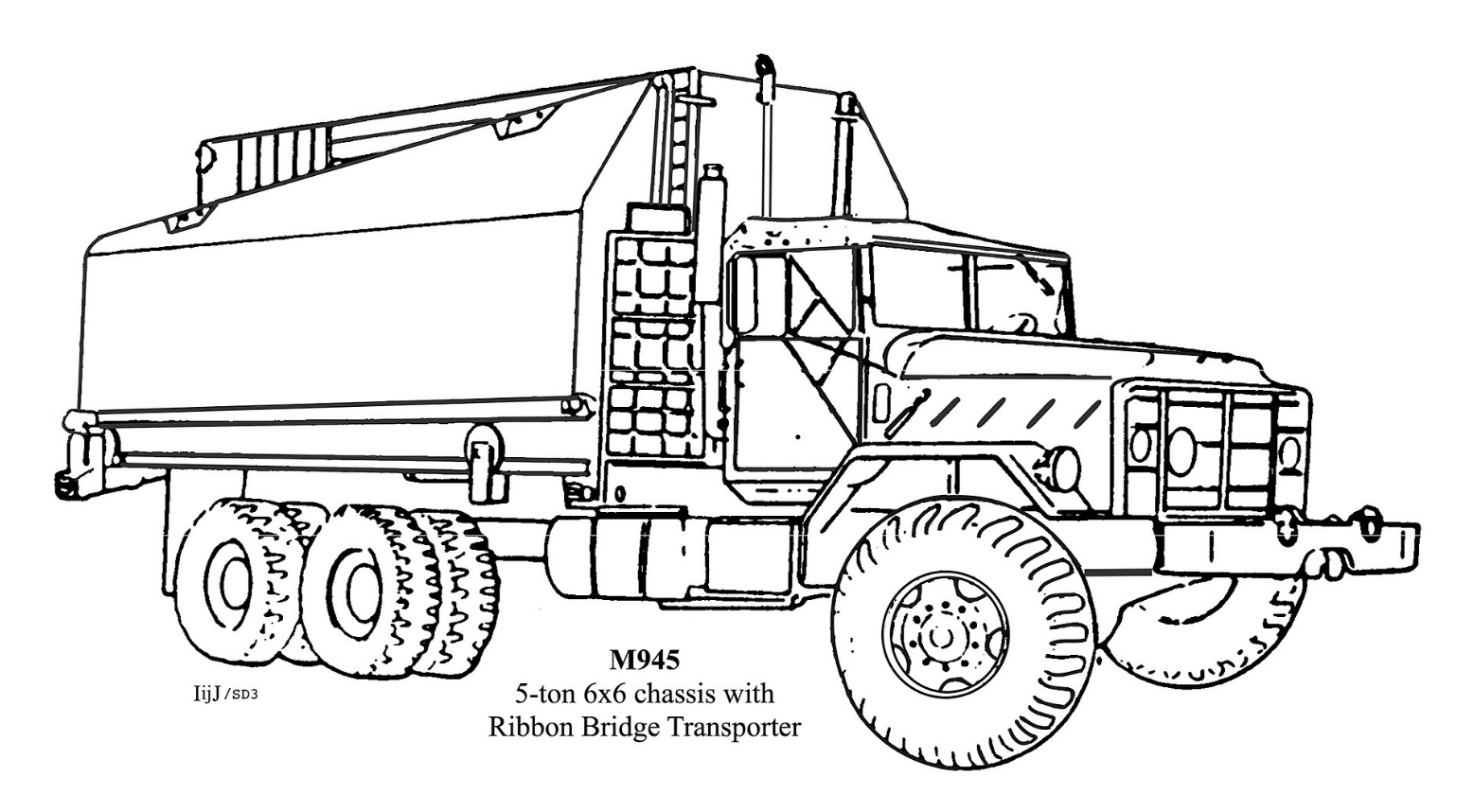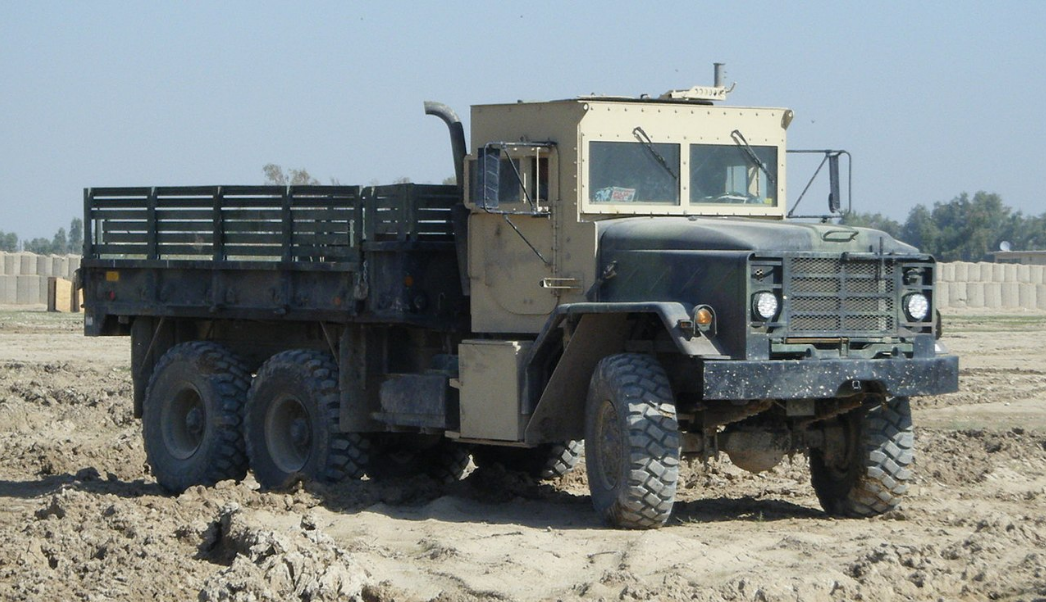The M939 Truck is a 5-ton 6×6 U.S. military heavy truck. The basic cargo versions were designed to transport a 10,000 pounds (4,500 kg) cargo load over all terrain in all weather. Designed in the late 1970s to replace the M39 and M809 series of trucks, it has been in service ever since. The M939 evolved into its own family of cargo trucks, dump trucks, semi-tractors, vans, wreckers, and bare chassis/cabs for specialty bodies. 44,590 in all were produced.
- m939
- m809
- semi-tractors
1. History
In the late 1970s the M809 series 5-ton (4,536 kg) 6x6 trucks, based on a 1949 design, were becoming old and mechanically dated. It was still a useful type, with 35,000 in service. A "Product Improvement Package" was developed to rebuild and update the M809 series into the M939 series. A new cab and hood are spotting features, but there were also other improvements.
In 1982 AM General, who built all M809s, began rebuilding M809s into the M939 and M939A1 series at their South Bend, Indiana plant. They would rebuild 24,100. A follow-up model, the all-new M939A2 series, was produced by Bowen-McLaughlin-York/BMY in Marysville, Ohio. They would build 20,490. In 1991 the M939 series was replaced by the all-new design M1083-M1091 Medium Tactical Vehicles.[1][2]
2. Specifications
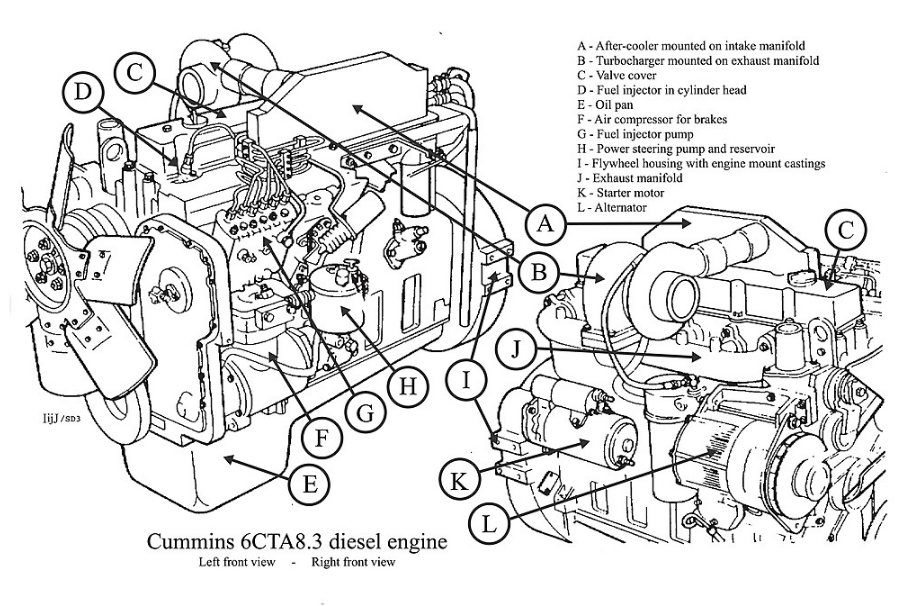
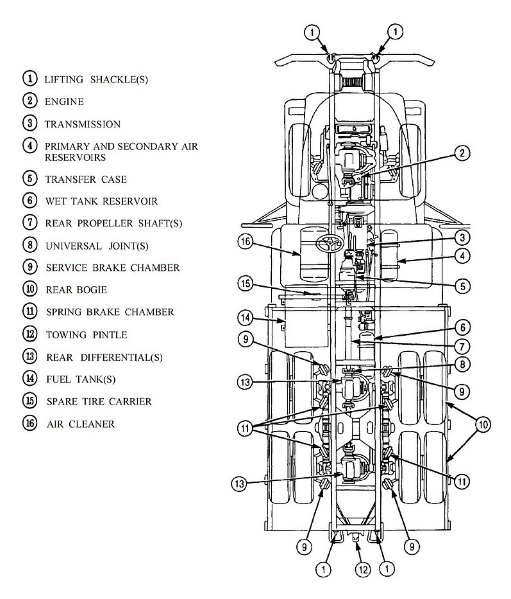
M939A1 and A2 have single rear tires.
All models of the M939 share a common basic chassis, cab, hood, and fenders. The basic truck is a 6×6 (three axles, six wheels, all of which are powered) heavy truck. Early M939s were rebuilds of M809 vehicle chassis with a new automatic transmission, transfer cases, cab, and hood. Suffix –A2 are new production with later model Cummins engine. The vehicles have a wide variety of configurations and weights.[1][3][4]
Note that the motor and tire specifications, along with other improvements, apply to the A2 versions (and A1 versions) of each base model listed below. There is an M928, an M928A1, and M928A2.
2.1. Engines
The M939 and M939A1 models use a Cummins NHC 250, a 855 cubic inches (14.0 L) naturally aspirated inline 6 cylinder diesel engine developing 240 horsepower (180 kW) at 2100 rpm and 685 pound force-feet (929 N⋅m) of torque at 1,500 rpm.[5] This was the standard engine of the M809 series. The M939A2 models use a newer and smaller Cummins 6CTA8.3 504 cubic inches (8.3 L) turbocharged inline 6 cylinder diesel engine developing 240 horsepower (180 kW) at 2100 rpm and 745 pound force-feet (1,010 N⋅m) torque at 1,500 rpm.[1][6][7]
2.2. Driveline
By 1980 fewer soldiers knew how to shift manual transmissions and heavy-duty automatic transmissions had matured so the M809's manual was replaced with an Allison MT654CR 5-speed automatic. This is easier to drive, shifts better, and has less shock to the chassis than a manual transmission.
The M809 had an unusual 2-speed transfer case that engaged the front axle automatically, a more modern and conventional model was used. It could shift between low and high ranges while moving. In the low range the front axle is automatically engaged, in the high range the driver controls it.[8]
The M809 series used Rockwell-Standard double-reduction axles with a 6.44:1 ratio. New production M939A2 use a similar Meritor model, also with a 6.44:1 ratio. Steering boxes and some other components have also changed. Entire components are interchangeable but the component parts are different.
2.3. Chassis
A ladder frame with three beam axles, the front on leaf springs, the rear tandem on leaf springs with locating arms, was used.
The M939 series uses 11:00 R20 tires with two tires per side per axle in the rear (rear tandem duals). This allows a heavy load to be carried on improved roads and most US trucks in the past have used them. Single, larger tires in a line (having the same track) work better and get stuck less often on soft ground. The M939A1 and M939A2 series use oversized 14:00 R20 tires and rear tandem "Super Singles". M939A2 series vehicles use a central tire inflation system (CTIS).[9]
There are three wheelbases (measurements are from the centerline of the front axle to the centerline of the rear tandem). The short, used for tractors and dump trucks, is 13 feet 11 inches (4.24 m), the long ("standard"), used for cargo trucks and wreckers, is 14 feet 11 inches (4.55 m), and the extra-long, used for long cargo trucks and expansible vans, is 17 feet 11 inches (5.46 m).[10]
The M809 series had an unusual air-over-hydraulic braking system, The M939 series have a commercial type air-brake system modified for military service.
3. Models
3.1. Cargo Truck M923-M928
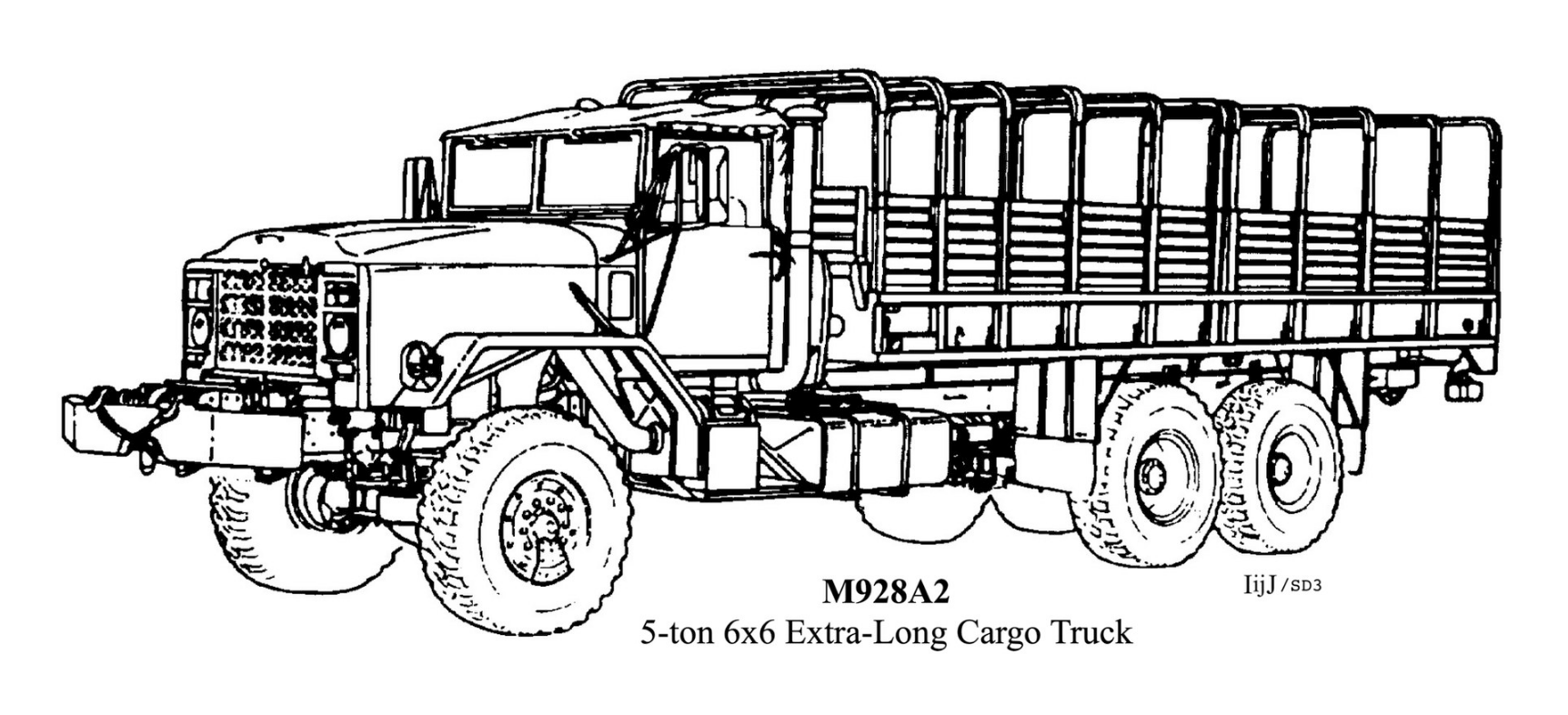
The M923 (M925 w/winch) was the standard cargo version of the series. It had a 14 by 7 feet (4.3 m × 2.1 m) body with drop sides so it could be loaded from the side by forklifts. It had a bottom hinged tailgate. Side racks, troop seats, and overhead bows with a canvas cover were standard.
The M927 (M928 w/winch), with an extra long wheelbase, had a 20 by 7 feet (6.1 m × 2.1 m) long box. There was no drop side version. Side racks and overhead bows with a canvas cover were standard but no troop seats were fitted.[11]
3.2. Dump Truck M929/M930

The M929 (M930 w/winch) was a dump truck used to haul sand, gravel, dirt, rubble, scrap, and other bulk materials. It had a dump body with cab protector and a tailgate that could hinge at either the top or bottom. They could be equipped with overhead bows, tarpaulin, and troop seats, but the relatively small size of the body limited their passenger or cargo load.[11]
3.3. Tractor Truck M931/M932

The M931 (M932 w/winch) was a semi-tractor used to tow semi-trailers up to 37,500 pounds (17,000 kg). A front-mounted winch was optional. Unlike commercial trucks the fifth-wheel could also pivot side to side, making a more flexible connection to the trailer. Even so, off-road performance was limited.[11]
3.4. Expansible Van M934/M935
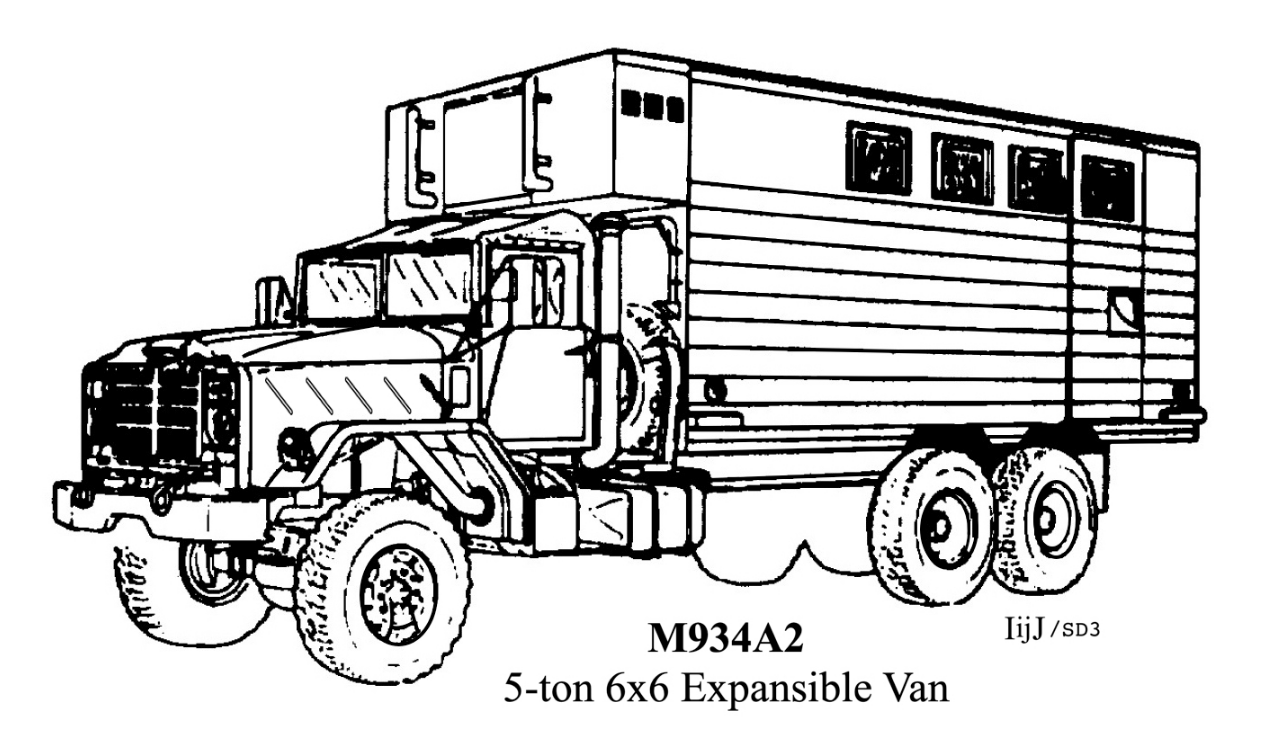
The M934 (M935 with a hydraulic lift-gate) had a 17 ft (5.2 m) van body with a slide out section on each side. When the sections are extended the working floor was over 12 ft (3.7 m) wide. The body could support 5,000 lb (2,300 kg) of communications equipment.[11]
3.5. Medium Wrecker M936

The M936 was a wrecker used to recover disabled or stuck trucks and lift large components. A rotating, telescoping, and elevating hydraulic boom could lift a maximum of 20,000 pounds (9,100 kg). Although the truck was not meant to carry a load, the boom could support 7,000 pounds (3,200 kg) when towing. They had 20,000 pounds (9,100 kg) front and 45,000 pounds (20,000 kg) rear winches, outriggers, boom braces, and special extra-heavy duty rear springs for stability. Chains, chocks, block and tackle, oxygen-acetylene torches, and other automotive tools were carried.[11]
3.6. Chassis-Cabs
The M939 to M945 were chassis with cabs, meant to carry specialized bodies. They were available in long and extra long wheelbases, and with or without front winches. The largest was the M945 used for Ribbon Bridge transporter bodies[1][12]
4. Dimensions
- 1.2 1.3 Reducible to 7 ft 9 in (2.36 m).
- ↑ 2.0 2.1 Reducible to 7 ft 1 in (2.16 m) with cab shield removed.
- ↑ 13 ft 11 in (4.24 m) when expanded.
- ↑ Reducible to 9 ft (2.74 m).
- ↑ 17 ft 4 in (5.28 m) loaded with ramp bay float.
| Model (-A2)[13] | Wheelbase | Length | Width | Height | Empty Weight |
|---|---|---|---|---|---|
| M923 Cargo | long | 25 ft 11 in (7.90 m) | 8 ft (2.44 m) | 9 ft 11 in (3.02 m)[14] | 20,930 lb (9,490 kg) |
| M925 Cargo | long | 27 ft 8 in (8.43 m) | 8 ft (2.44 m) | 9 ft 11 in (3.02 m)[14] | 22,030 lb (9,990 kg) |
| M927 Cargo | extra long | 32 ft 1.5 in (9.79 m) | 8 ft (2.44 m) | 10 ft 1 in (3.07 m)[14] | 23,790 lb (10,790 kg) |
| M928 Cargo | extra long | 34 ft (10.36 m) | 8 ft 2 in (2.49 m) | 10 ft 1 in (3.07 m)[14] | 24,890 lb (11,290 kg) |
| M929 Dump | short | 22 ft 11 in (6.99 m) | 7 ft 11 in (2.41 m) | 10 ft 5 in (3.18 m)[15] | 23,820 lb (10,800 kg) |
| M930 Dump | short | 24 ft 6.5 in (7.48 m) | 7 ft 11 in (2.41 m) | 10 ft 5 in (3.18 m)[15] | 24,920 lb (11,300 kg) |
| M931 Tractor | short | 22 ft .5 in (6.72 m) | 8 ft 1.4 in (2.47 m) | 9 ft 6.9 in (2.92 m) | 19,895 lb (9,024 kg) |
| M932 Tractor | short | 23 ft 10 in (7.26 m) | 8 ft 1.4 in (2.47 m) | 9 ft 6.9 in (2.92 m) | 20,995 lb (9,523 kg) |
| M934 Expansible van | extra long | 30 ft 2.6 in (9.21 m) | 8 ft 2 in (2.49 m)[16] | 11 ft 6 in (3.51 m) | 28,035 lb (12,716 kg) |
| M936 Wrecker[17] | long | 30 ft 2 in (9.19 m) | 8 ft 1 in (2.46 m) | 10 ft (3.05 m)[18] | 36,910 lb (16,740 kg) |
| M945 Bridge transporter[19] | long | 31 ft 4 in (9.55 m) | 11 ft 3 in (3.43 m) | 9 ft 10 in (3.00 m)[20] | 27,400 lb (12,500 kg) |
- ↑ 1.0 1.1
5. Gallery
-
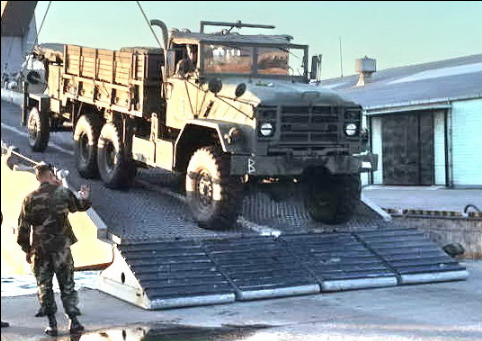
M923A1 Cargo truck
-

M928A2 Long cargo truck
(note CTIS on front axle) -
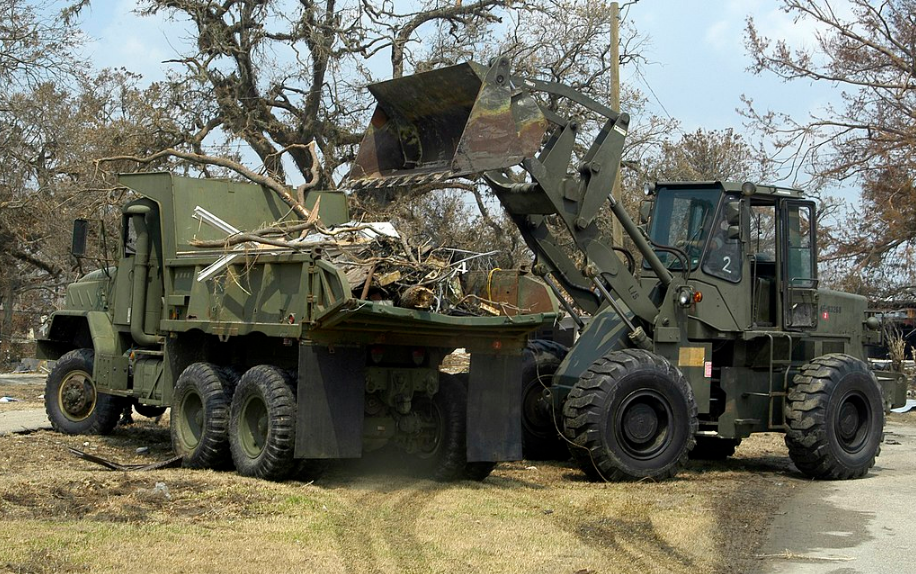
M929 Dump truck
-

M931 Semi-tractors
-
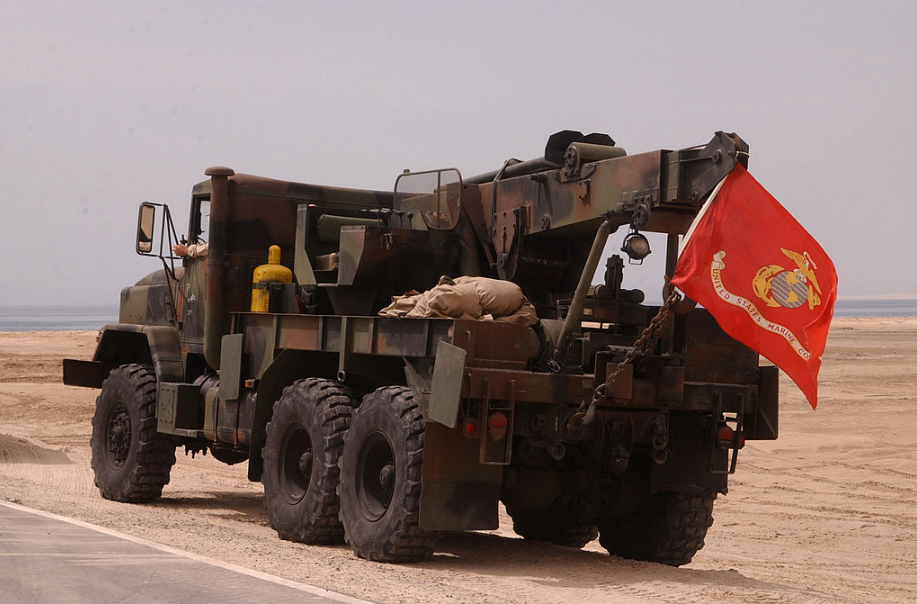
M936A1 Medium wrecker
-

M945 w/bridge transporter
-
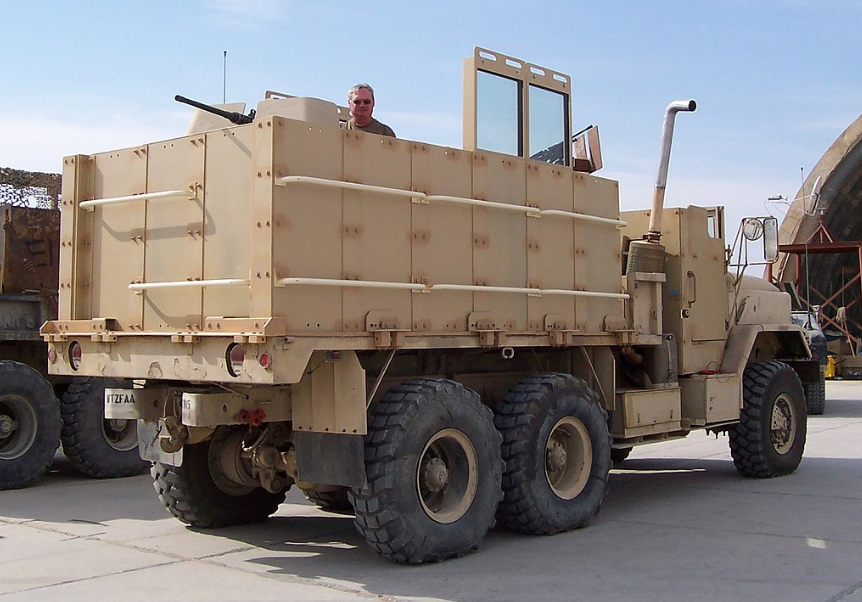
M923A1 gun truck
6. Operators
 United States
United States Argentina[21]
Argentina[21] Colombia[22]
Colombia[22] Ecuador
Ecuador Egypt
Egypt Georgia
Georgia Indonesia
Indonesia Iraq
Iraq Saudi Arabia[23]
Saudi Arabia[23] Lebanon
Lebanon Morocco
Morocco Mexico
Mexico Malaysia
Malaysia Philippines
Philippines Taiwan
Taiwan Thailand
Thailand Somalia[24]
Somalia[24] Turkey
Turkey
7. Safety
The safety of the M939 series of trucks has been criticized, especially braking performance and stability when loaded. In 1999 the U.S. Army began retrofitting anti-lock brake systems to the M939 trucks.[25] Until the trucks were modified, they were limited to a 40 mph (65 km/h) top speed by an Army-wide safety order.
Prior to that improvement, 26% of all Army vehicle accidents and 53% of all Army vehicle accident fatalities were in M939 series trucks. From 1987 to 1998 the series made up 9% of the total U.S. Army vehicle inventory, but accounted for 34% of all fatal accidents.[26]
The problem seemed to be that the torque converter would "lock up" in 2nd gear, and would not unlock easily. When the driver attempted to brake hard, often in a sudden or 'panic' stop, and accidentally locked the brakes (no wheel movement, tires skidding), this would kill the engine; this also killed the power steering, and the driver would suddenly be unable to steer. Too often, the truck would veer sideways and either hit something or roll over.[27]
References
- Doyle, David (2003). Standard catalog of U.S. Military Vehicles. Krause Publications. pp. 200–204. ISBN 0-87349-508-X.
- Military Vehicles Forecast: United States Tactical Vehicles. Forecast International. 2003. https://www.forecastinternational.com/archive/disp_pdf.cfm?DACH_RECNO=407. Retrieved 19 Jul 2019.
- TM 9-2320-272-24-1 Unit, Direct Support, and General Support Maintenance Manual for Truck, 5-ton, 6x6, M939, M939A1, M939A2 Series Trucks (Diesel). US Dept. of the Army. 1998. https://www.liberatedmanuals.com/TM-9-2320-272-24-1.pdf. Retrieved 18 Jul 2019.
- TM 9-2320-272-10 Operrator's Manual (2004), p. 1-9.
- TM 9-2320-272-24-2 Unit, DS, and GS Maintenance Manual Volume 2. US Dept. of the Army. 1998. https://www.liberatedmanuals.com/TM-9-2320-272-24-2.pdf. Retrieved 18 Jul 2019.
- TM 9-2320-272-10 Operator's Manual (2004), p. 1-22.
- TM 9-2320-272-24-3 Unit, DS, and GS Maintenance Manual Volume 3. US Dept. of the Army. 1998. https://www.liberatedmanuals.com/TM-9-2320-272-24-3.pdf. Retrieved 18 Jul 2019.
- TM 9-2320-272-10 Operator's Manual (2004), pp. 1-34, 1-35.
- TM 9-2320-272-10 Operator's Manual (2004), pp. 1-24, 1-25, 2-6.
- TM 9-2320-272-10 Operator's Manual (2004), p. 1-15.
- TM 9-2320-272-24-1 Unit, DS, and GS Maint. (1998), pp. 1-6 to 1-15.
- TM 5-5420-209-12 Operator's and Unit Maintenance Manual Improved Float Bridge (Ribbon Bridge). US Dept. of the Army. 2005. https://www.liberatedmanuals.com/TM-5-5420-209-12.pdf. Retrieved 17 Jun 2019.
- TM 55-2320-272-14-1 Transport Guidance Technical Manual Truck 5-ton, 6x6, M939-Series, M939A1-Series, and M939A2-Series. US Dept. of the Army. 1993. https://www.liberatedmanuals.com/TM-55-2320-272-14-1.pdf. Retrieved 2 Aug 2019.
- Reducible to 7 ft 9 in (2.36 m).
- Reducible to 7 ft 1 in (2.16 m) with cab shield removed.
- 13 ft 11 in (4.24 m) when expanded.
- TM 9-2320-272-10 Operator's Manual (2004), pp. 1-17 to 1-19.
- Reducible to 9 ft (2.74 m).
- TM 5-5420-209-12 Maint. Manual (Ribbon Bridge) (2005), p. 1-8.
- 17 ft 4 in (5.28 m) loaded with ramp bay float.
- "Ejercito Argentino REO M931A2 03 Octubre 2014". http://www.ejercito.mil.ar/sitio/noticias/noticia.asp?Id=1116.
- "Archived copy". http://www.infodefensa.com/latam/2016/12/16/noticia-colombia-ejercito-colombiano-exhibe-primera-proyecto-autopropulsado.html.
- "Annex C Appendix II". US Army Technical Manual of Foreign Military Sales: Battlefield Damage Assessment and Repair. Washington, D.C.. 18 December 1987. p. 263 (C-3). TM 9-2320-356-BD. http://imfmotorpool.com/063247.PDF. Retrieved 24 January 2019.
- "Archived copy". https://www.youtube.com/watch?v=MXFv-GhgdjY.
- MWO 9-2320272-35-1 Modification of 5-ton M939...Brake Stabilization Program (Retrofit of Anti-lock Brake System (ABS) for M939 FOV). US Dept. of the Army. 2007. https://www.nsncenter.com/Files/library/TM/M939/MWO-9-2320-272-35-1/MWO-9-2320-272-35-1.pdf. Retrieved 21 Jul 2019.
- M939 series information page at globalsecurity.org , Accessed 5 Dec 2014 http://www.globalsecurity.org/military/systems/ground/m939.htm
- "Military Safety: Army M939 5-Ton Truck Accident History and Planned Modifications". US General Accounting Office. 4 Sep 1999. http://www.globalsecurity.org/military/library/report/gao/nsiad-99-082.htm.

